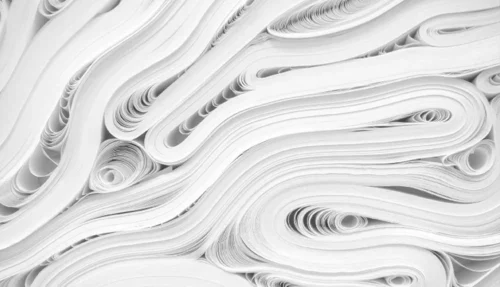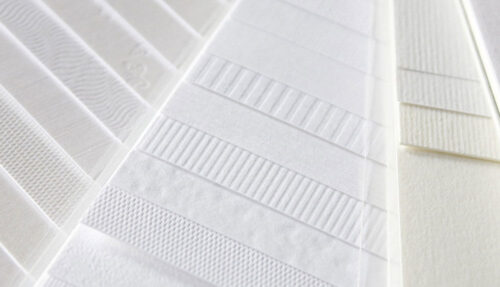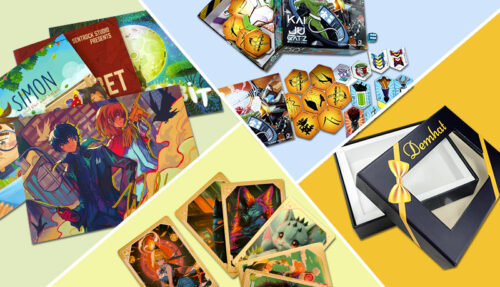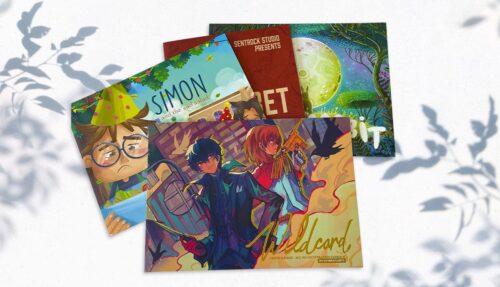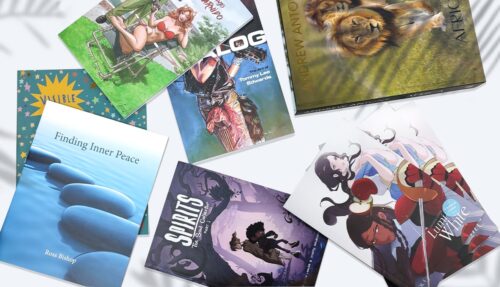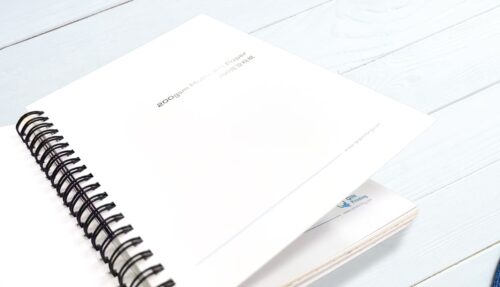In this post, we examine the possibilities and potential of enhancing your prints with textured papers for an added touch of style and class
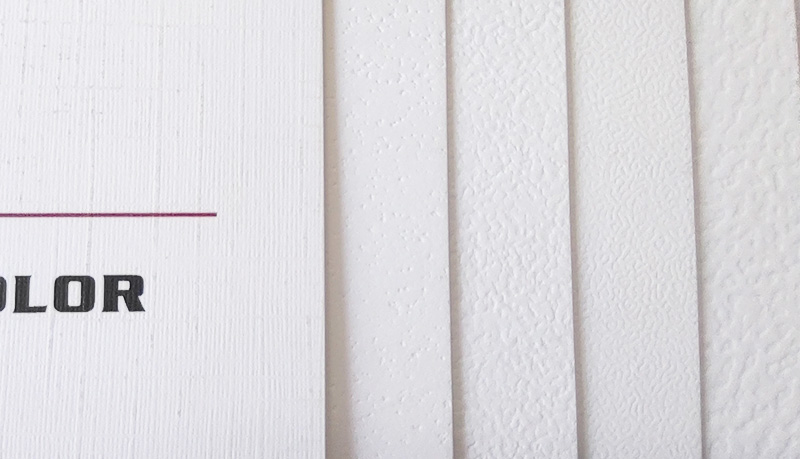
In the realm of print design, the choice of paper holds the power to transform ordinary creations into extraordinary works of art. Textured paper, with its tactile allure and visual richness, offers a canvas that speaks volumes before a single word is read or an image is seen. From the subtle sophistication of laid textures to the soft elegance of linen finishes, the varieties of textured paper are as diverse as the creative possibilities they unlock.
Summary of textured paper benefits
Beyond its aesthetic appeal, textured paper imparts a sense of quality and craftsmanship that elevates printed materials to new heights. Its tactile nature invites interaction, drawing viewers closer to explore every nuance of the design. Whether used for endpapers in hardcover books, art prints, coffee table books, or packaging design, textured paper adds depth, authenticity, and a touch of luxury to any project.
In this post, we’ll explore the myriad benefits of textured paper, examine its diverse varieties, and discuss best practices for printing to make sure your designs shine on every textured surface. Let’s turn the page and discover the boundless potential of textured paper in print design.
The impact of textured paper quality
Quality is not just a visual aspect; it’s something that can be felt. Textured paper communicates a sense of luxury and craftsmanship that resonates with the discerning viewer. When selecting textured paper for your printed materials, consider the impression you want to leave on your reader or end-user. For example, using textured paper for the endpapers in hardcover books can enhance the overall reading experience by providing a tactile introduction to the content while suggesting a level of luxury and value at little extra cost of production.
Textured paper also adds a layer of authenticity to printed artworks. For example, artists we’ve worked with often choose textured paper for their prints to replicate the look and feel of traditional media such as watercolors or pastels. Even a photograph printed on the right textured paper can adopt a similar look and feel to an oil painting, for example. This choice not only enhances the aesthetic appeal of the artwork but also imbues it with a sense of heritage and craftsmanship. For instance, coffee table style books featuring textured paper can showcase art prints in a manner that captivates the viewer and invites them to engage with the content on a deeper aesthetic level.
Packaging design can benefit greatly from the use of textured paper, too. Whether it’s for luxury products like perfumes or artisanal chocolates, or for eco-friendly brands aiming for a rustic aesthetic, textured paper adds a tactile element that elevates the unboxing experience. The texture of the paper can complement the brand’s identity and convey a sense of premium quality to consumers. For example, a skincare brand we work with opted for linen-textured paper for its packaging to convey a sense of natural elegance and sophistication.
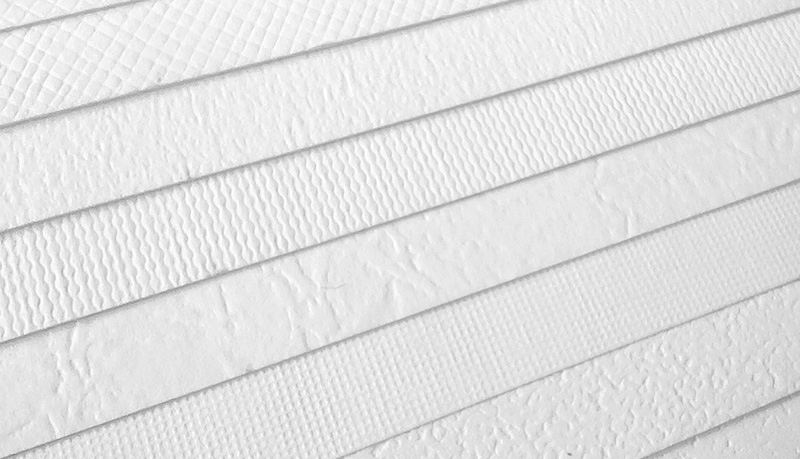
Textured paper printing and tactility
The tactile allure of textured paper invites viewers to engage with printed materials on a sensual, physical level. When someone picks up a brochure or business card printed on textured paper, they are immediately drawn to touch and explore its surface. This interaction creates a memorable experience and leaves a lasting impression on the recipient.
Textured paper can evoke specific emotions and associations that enhance the overall message of the design. For example, we often print wedding invitations on linen-textured paper, enhanced with foil stamped embossed text, which exudes elegance and sophistication, setting the tone for a formal affair. Similarly, a menu printed on felt-textured paper in a restaurant can evoke a sense of comfort and warmth, aligning with the establishment’s cozy ambiance. Understanding the psychological impact of texture allows designers to leverage it strategically to create compelling visual narratives.
But it’s not all about aesthetics and psychology. Textured paper can serve as a functional element in design, providing both visual interest and practical benefits. For instance, using column-textured paper for business stationery adds a subtle yet distinctive touch that sets it apart from standard office supplies. The texture not only enhances the aesthetics of the stationery but also improves the writing experience, offering a surface that feels smooth yet substantial under the pen.
The arts and crafts appeal of textured prints
Textured paper can lend an air of something more artisan-made to printed materials, making them stand out in a world inundated with mass-produced content, even if they are mass produced. Whether it’s a postcard featuring an original artwork or a brochure showcasing handcrafted products, textured paper adds a clear value message that enhances the overall presentation for certain products.
As a print designer, textured paper can be a versatile tool for you to create visual interest and depth in your compositions. By strategically incorporating different textures into your designs, you can evoke specific moods and evoke emotional responses from viewers and readers. For instance, a magazine cover printed on linen-textured paper might convey a sense of sophistication and refinement, while a flyer printed on felt-textured paper might evoke a sense of creativity and artistic flair.
The embossed texture of linen paper can enhance the legibility of printed text by providing a subtle contrast between light and shadow. The soft-feel surface of felt paper can enhance printed images by adding depth and dimension to the colors, especially when combined with a matte varnish. Understanding how texture interacts with other design elements, such as coatings, and finishing, allows you to develop truly original designs that really resonate and draw attention.
Examples of paper textures
The world of textured paper is rich and varied, offering a wide range of options to suit every design aesthetic and application. From classic laid textures to modern felt finishes, each texture has its own unique characteristics and appeal. While we have literally hundreds of different papers in our sample book (which you can order from us just for the cost of mailing) it’s useful to get some understanding of the different types of textured paper by looking at a few of the most popular examples.
So, let’s look at three paper textures.
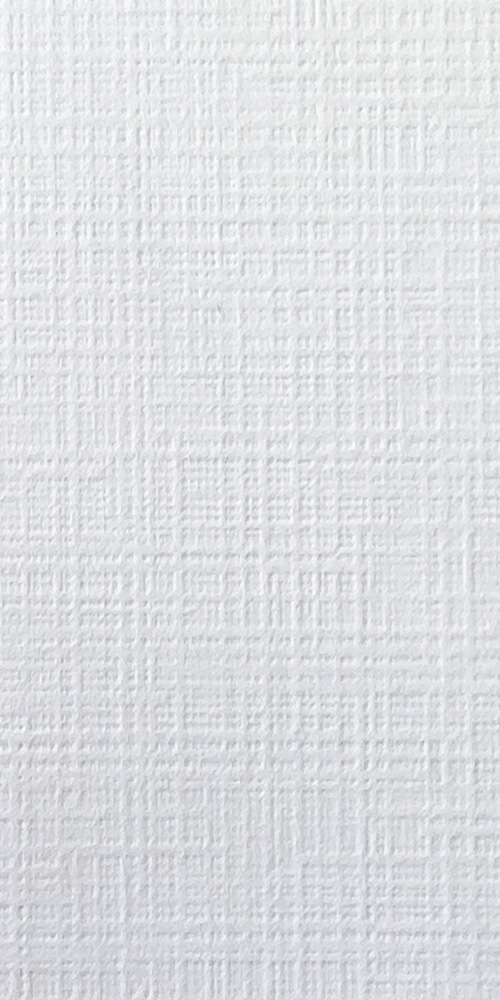
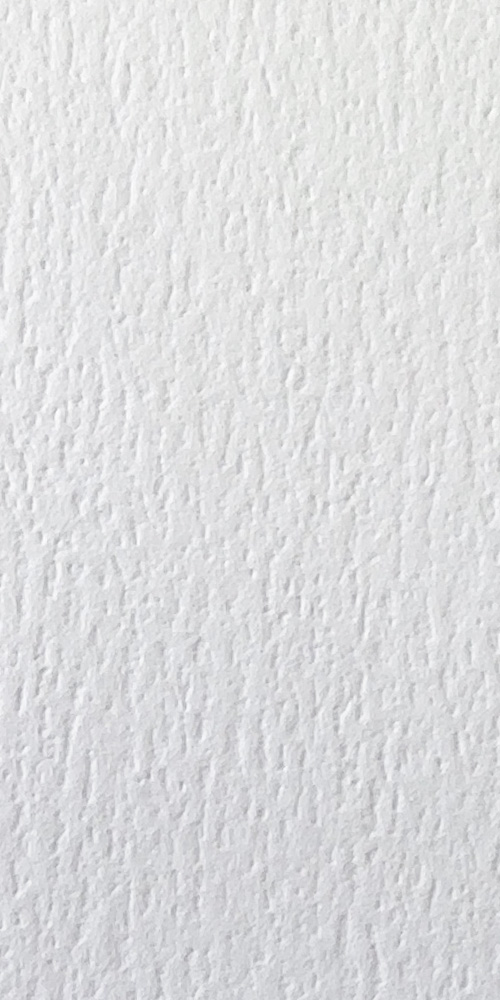
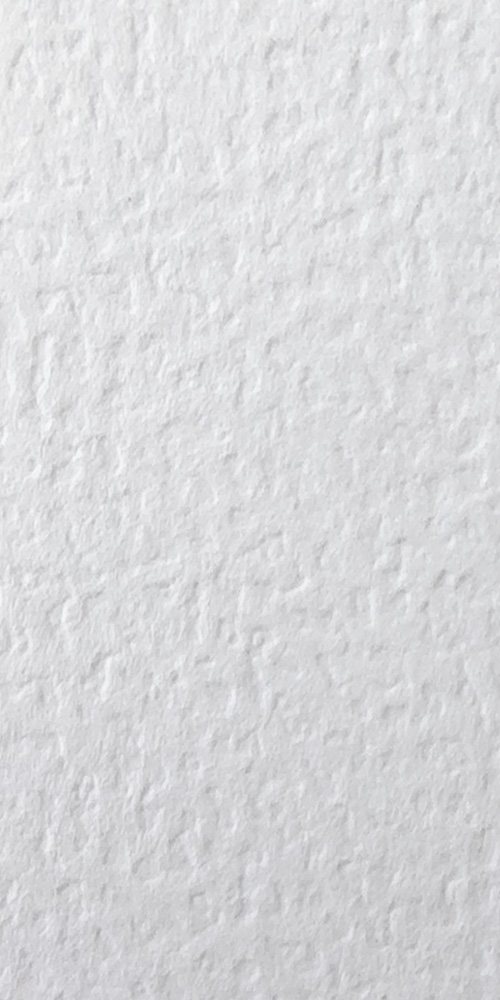
- Manufacturing process: created by embossing the paper surface with a pattern that mimics the texture. This embossing process gives the paper a distinctive tactile quality.
- Materials used: made from wood pulp.
- Common paper weights: is available in a wide range of weights, from lightweight text weights (120–180 gsm) suitable for stationery to heavyweight cover weights (180–400 gsm) ideal for packaging and promotional materials.
- Absorbency: has moderate absorbency, allowing for vibrant ink colors while still retaining the texture’s visual appeal.
- Printing considerations: require adjustments to ink density and drying times to ensure optimal print quality. Designers should also consider the embossed texture when designing intricate patterns or detailed graphics.
As we mentioned before, we have a comprehensive range of papers available for your every need. This includes varieties of textured papers, metallic papers, holographic paper, and more. Discover more about our paper sample book and order your copy here: Paper Samples.
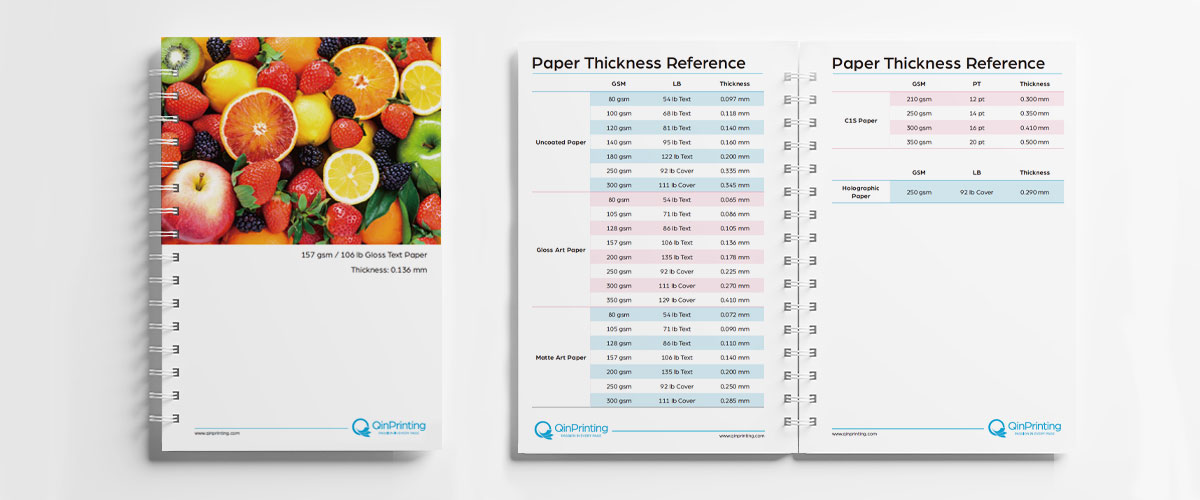
Offset printing and textured paper
Offset lithographic printing — which is what we specialize in here at QinPrinting — is particularly well-suited for printing on textured papers due to its unique process. In offset printing, ink is transferred from a metal plate onto a rubber blanket, which then transfers the ink onto the paper surface. This indirect printing method allows for precise ink application and color control, which is essential for maintaining the integrity of textured paper surfaces. Unlike digital printing, which applies ink directly onto the paper, offset printing ensures that the ink conforms to the contours of the textured surface, resulting in crisp, vibrant prints with minimal ink absorption. This makes offset printing the preferred choice for achieving high-quality results on textured papers.
Is textured paper expensive?
Offset printing offers cost-effectiveness for larger print runs on textured paper. While the initial setup costs for offset printing may be higher compared to digital printing, the per-unit cost decreases significantly with larger quantities. This scalability makes offset printing ideal for projects such as books, brochures, art prints, catalogs, and high-end packaging solutions, where large quantities are often required.
The perceived added value that textured paper brings to these products can justify the slightly higher production costs. Customers are often willing to pay a premium for products printed on textured paper, recognizing the tactile and visual appeal it adds to the finished product. So, while the production costs of offset printing on textured paper may be marginally higher than standard papers, the enhanced perceived value and overall quality of the end product more than compensate for this difference.
Talk to us!
At QinPrinting, we’ve developed a world-wide reputation for offset printing excellence based on our faultless business protocols, high-quality products, fast turnaround and delivery times, and an unbeatable commitment to personalized customer service. Whatever your printing needs, we’d love to hear from you so we can develop a tailored solution perfectly suited to your project and your budget. Interested? Let’s talk!





